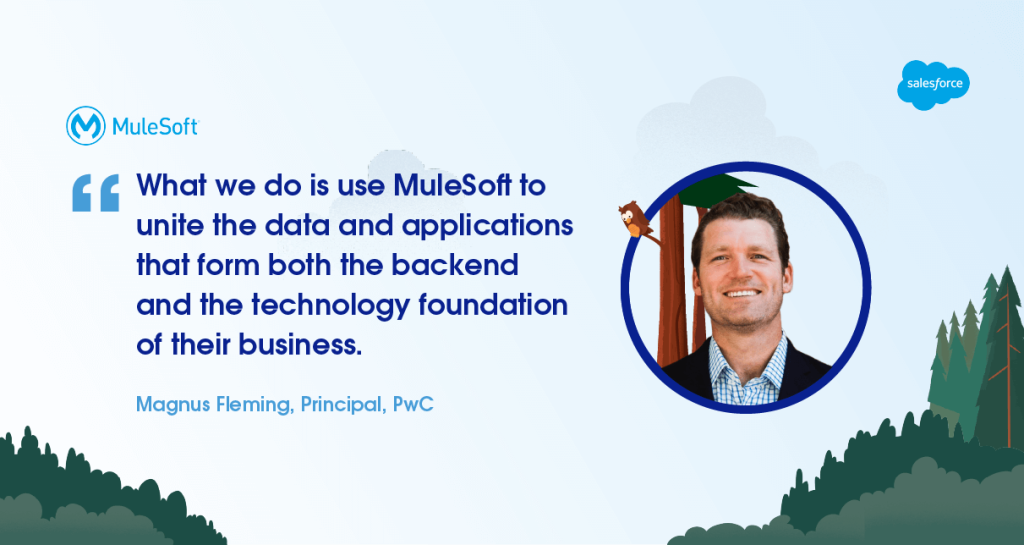Finger on the Pulse is a series where we explore the major trends shaping business technology. In each post, you’ll learn from our key partners and their perspective on an industry trend through the lens of their unique business. Recently, we explored how to build business agility with smart integration. In this interview, the focus is managing the growing complexity of digital ecosystems.

Managing expanding digital ecosystems
Customer expectations for digital engagement with brands continue to rise. What’s less well known is how many companies are actually undermining the success of their digital transformations in their effort to improve customer experiences.
To deliver smooth, multi-channel, personalized journeys, enterprises of every industry are adding new software and launching more partnerships in their digital ecosystems. That growth is a good thing, but only if the data and solutions are well-integrated. A new mobile app can actually damage a customer experience if it doesn’t seamlessly incorporate all of their relevant data and preferences.
Without a strategic and integrated approach, enterprises risk building their new business models and customer offerings on flawed foundations. At best, those flaws can introduce inefficiencies that bury data and slow down operations. At worst, they can cause new initiatives to collapse under their own weight.
MuleSoft and PwC help clients unify and improve their digital ecosystems so that each new solution added can quickly deliver its intended value to end customers. We spoke with Ian Kahn, Principal and Salesforce Leader at PwC, and Magnus Fleming, Principal at PwC, to learn how they’re helping companies around the world scale their digital operations to achieve new levels of growth.
What are some obstacles that your clients are facing in managing their digital ecosystems?
One of the areas our clients have trouble with as they add more features and solutions to their digital ecosystems is in onboarding new partners or improving their supply chains. A healthy digital ecosystem is necessary to facilitate successful relationships with other businesses.
To quickly and accurately share the data necessary to extract value from those partnerships, they need a well-connected and highly organized data infrastructure. Piecemeal processes and highly customized or manual methods of data transfer aren’t scalable and often lead to errors that can be a lot of work to fix.
It might be helpful to think of a specific example, like an automotive part manufacturer. In order to deliver the parts that an end customer needs in a timely manner, they have to efficiently collaborate with a variety of other businesses. Whether that’s an automotive brand, a local dealership, regional suppliers, or shipping and logistics partners, a lot of very specific data needs to be shared quickly and efficiently to create the smooth experience that the customer expects.
With a legacy data model and poorly integrated digital ecosystem, that manufacturer has little chance of delivering a smooth experience in a timely manner at scale. But with a solid digital foundation, industry leaders can access new revenue opportunities quickly and deliver better customer experiences than ever before.
How do PwC and MuleSoft join forces to help companies overcome those challenges?
We love working with MuleSoft because its vision for seamless and integrated digital ecosystems aligns perfectly with our industry leadership in digital transformation. We’ve been one of Salesforce’s most prolific partners for many years, and MuleSoft enables Salesforce to reach its full potential. Combining that efficiency with PwC’s deep industry knowledge in business strategy, change management, and technology innovation helps our clients move from wrangling a disconnected ecosystem to leveraging that ecosystem for significant growth.
Going back to the automotive part manufacturer who is struggling to extract the value they need from their partners and suppliers, what we do is use MuleSoft to unite the data and applications that form both the backend and the technology foundation of their business. We help them develop a unified digital ecosystem so that their partner relationships run smoothly.

Tell us some business outcomes your clients realize when you help them improve their digital ecosystem
This is the exciting part. When you introduce efficiency and strategy into such a foundational component of your business, it benefits all the systems and goals that foundation is designed to support.
An integrated and more manageable digital ecosystem lets our clients launch new goods, services, or features much faster than before. It makes it possible to deliver customer experiences that are both more personalized and smoother across channels. It gives sales and service teams a clearer picture of the end-to-end customer journey. It dramatically increases data visibility and makes it easier to measure performance, and it creates more resilience and adaptability to weather future shifts in their industry or in the global economy like we saw in the pandemic.
How would you describe the benefits of a well-managed digital ecosystem for end customers?
That’s a great question because benefits for the company won’t amount to much in the long term if they don’t also benefit end customers. I would say that there are three key benefits for the customer when you successfully manage your growing digital ecosystem: speed, ease, and security. We all know that customer expectations have risen in all three of those categories, so it’s hard to overstate their significance.
In terms of speed, whether that’s loading a website or waiting for delivery of a product, a highly integrated and strategically curated digital ecosystem can make almost everything in a business run faster.
Ease and convenience flow naturally both from data integration and from the automation made possible by that integration – especially when you’re talking about omnichannel experiences. And with data security rising as a customer priority, enterprises that build their ecosystems with MuleSoft and other Salesforce family solutions benefit from a variety of built-in security features like encryption and customizable permission controls.
If you’d like to learn more about PwC, explore their integration solutions.









